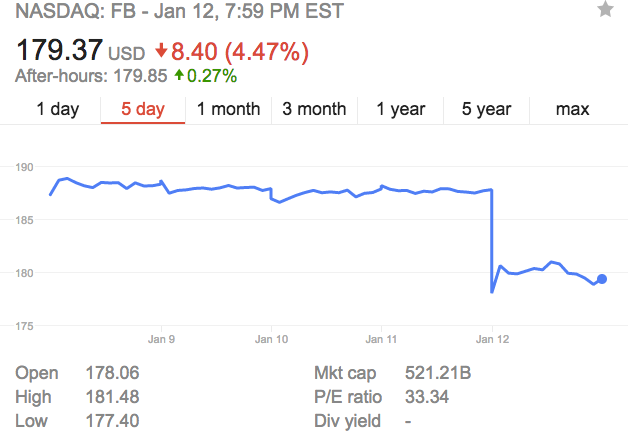By now you’ve probably heard the recent announcement from Mark Zuckerberg about engagement on Facebook. It’s a bit long, but here are some highlights from his post:
- “…recently we’ve gotten feedback from our community that public content — posts from businesses, brands and media — is crowding out the personal moments that lead us to connect more with each other.”
- “Since there’s more public content than posts from your friends and family, the balance of what’s in News Feed has shifted away from the most important thing Facebook can do — help us connect with each other.”
- “I’m changing the goal I give our product teams from focusing on helping you find relevant content to helping you have more meaningful social interactions.”
- “As we roll this out, you’ll see less public content like posts from businesses, brands, and media. And the public content you see more will be held to the same standard — it should encourage meaningful interactions between people.”
- “By focusing on bringing people closer together — whether it’s with family and friends, or around important moments in the world — we can help make sure that Facebook is time well spent.”
This has a whole lot of marketers freaking out. Engagement on brand Facebook pages has been in the tank for a long time now, Larry Kim recently wrote a post showing a significant drop in engagement with content on the site down by more than 20% in 2017.
So of course people think this means now they’ll be seen even less and forced to spend money on ads to push their content in front of consumers.
The effects of this announcement
It’s not just marketers who are panicking, Facebook stocks dropped nearly 9% on the announcement. (Twitter shares, by the way, jumped almost 5% on the announcement. ) Brands are deciding if they are going to commit more ad $$ to Facebook or if they should move to other networks.
What does it mean?
Actually, nobody really knows yet. The concept of a social network that is devoted to it’s users actually having conversations is appealing. It’s what most of these sites were originally designed for. Then brands started using them as customer service and acquisition channels and some of them brought old-school broadcast and spray and pray tactics. Other brands though, actually are getting authentic engagement on their pages, much higher than the average, and those, I think, will probably still do well.
What should you do?
First off, don’t freak out. It will take time for things to settle down. Nobody can tell yet how it will really change, but it’s likely we will see brands experimenting to see what works now. Here are some ideas.
- Don’t over-post. Posting frequently seems like a good idea, but if nobody is engaging with comments and shares, it feels spammy. Focus on quality rather than quantity and stick with 1-2 posts a day.
- Create content with clear calls to action like quizzes, questions and short videos that give great information. Videos that are longer than a couple of minutes, or clearly marketing driven are probably not going to get you as much engagement.
- Make sure it’s easy for people to go to your Facebook page and engage there. If your content is not showing up in your newsfeed, you’re going to have to get them to want to go to your page. Ofer special Facebook-only information or discounts.
- Think edutainment. People want solid information but they want to have fun discovering it!
- Review what posts are working best in your insights and fine-tune the content you create to do more of that.
- Remember, Mark Zuckerberg wants us to engage with each other more. Create content that gets your fans talking to each other on your page. Talk back to them, and encourage them to come back for more.
- I was going to say you should consider your ad strategy going forward, but heck, we don’t know what is going to work right now, so a little judicious testing is probably your best bet.
- Let us know what you find out!
